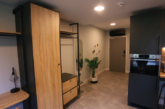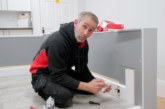
To unlock the full potential of heating controls housebuilders need to understand what is available beyond basic compliance with legislation, says Nigel Sanger of JG Speedfit.
Despite the technological advancements that have been made over the past 40 years, the technology used in many heating control solutions is still fairly basic. With the best will in the world, a boiler is only as efficient as its heating controls.
The energy controls industry has grown enormously over the past few decades as homeowners and property developers look to maximise energy efficiency while slashing energy bills in the process. While lighting controls have come a long way in this time, with better functionality than ever before, the same cannot be said for heating controls.
One of the reasons for this is Part L of the Building Regulations, which was introduced as a way of making properties more sustainable by making heating systems more efficient. In essence, this stipulated that only very basic heating control systems had to be included when installing a new boiler. While of course this is a step in the right direction, the potential energy and costs savings are limited by sub-optimal heating controls. When the bar is set so low, it is perhaps inevitable that developers go for the basic option when designing a building. While this may be the more cost-effective solution in the short term, it does not allow for greater energy efficiency over time.
If an electrician came into your house and said: “I’ve wired your house so that you can have all the lights in your house either on or off at any one time”, it’s fair to say you probably wouldn’t be left impressed. And yet, this is essentially what we have at the moment with the vast majority of heating controls; a choice between ‘on’ and ‘off’ for an entire house. The importance of adequate heating systems, which account for 70% of the energy consumption of an average household, is undeniable and yet, this is not entirely reflected in the controls which are currently in use.
Many heating controls currently on the market needlessly heat all rooms and spaces and in doing so, energy is wasted. Indeed, end-users have the option to turn off individual radiators manually but this somewhat defeats the purpose of having heating controls in the first place. Furthermore, traditional TRV’s do not offer an interlock facility and so boilers remain on, wasting additional energy.
If people were fully aware of the inefficiency of most common heating systems they would be horrified. By understanding what solutions are available and best practice for installation, property developers are in a better position to make informed decisions.
Low uptake
While technological change in other aspects of energy control, such as lighting, has been extremely rapid, the same cannot be said for heating. One possible explanation for this is the curriculum for apprentice plumbers and installers, which doesn’t devote much time to heating control technology and many developers are also unaware of its importance.
As a result, many installers simply aren’t fully aware of the benefits of smart heating control and aren’t always in a position to advise on best practice. Moreover, there is very little incentive for property developers to specify systems which go above and beyond the basic requirements for heating controls as outlined in Part L. This, alongside a certain resistance to change, explains why the uptake of cutting edge heating control technology is perhaps lower than it could be, particularly for new build projects.
Reduction in bills
For the reasons that I’ve discussed, levels of awareness around heating control systems are still relatively low. Until this changes the potential impact of heating controls is limited. By opting for a system which delivers a combination of zoning, time control, temperature control and interlock available in every room of the home, developers could enable occupants to reduce their heating bills plummet overnight, by as much as 30%.
“Many heating controls currently on the market needlessly heat all rooms and spaces and in doing so, energy is wasted”
While the installation process is relatively straightforward and controls can be installed in a variety of ways or even retrofitted to an existing system within a matter of hours, the cost savings are immediate and accrue over time, more than justifying any initial investment. Similarly, installing cutting edge heating controls helps to create a more comfortable, more pleasant home environment, considerably increasing the desirability of a property.
Property developers need to be aware of any applicable legislation which governs heating controls, most notably, Part L of the building regulations. At the same time, we need to recognise that current legislation does not stipulate best practice in terms of heating controls.
While this needs to change, it is important to be aware of the solutions available on the market and to specify a system which delivers maximum control in terms of zoning, time and temperature control and interlock. Only when property developers opt for best practice in heating controls will we start to see the full energy and cost saving benefits of the technology.









